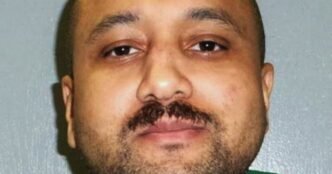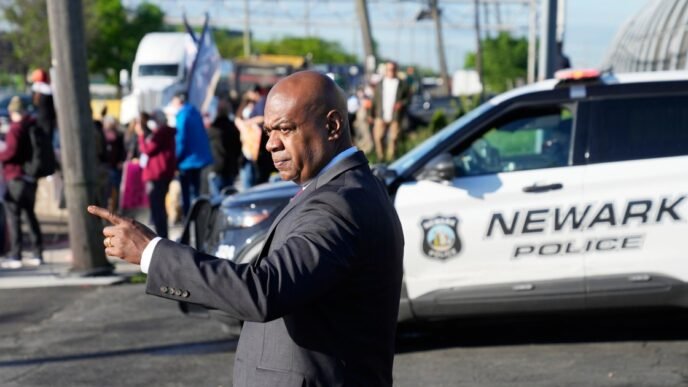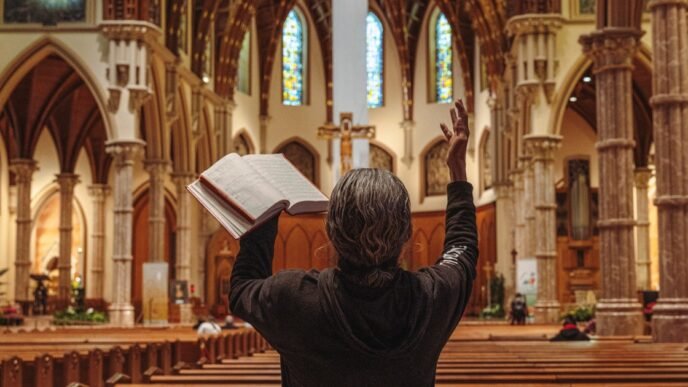Mikal Mahdi was the second man in South Carolina to be executed by a three-person firing squad on April 11, after admitting to killing an off-duty police officer in 2004.
Mahdi’s legal team filed a complaint with the South Carolina Supreme Court on Thursday saying that the execution was botched., The filing contained a report from forensic pathologist Dr. Jonathan Arden, who reviewed Mahdi’s autopsy and photographs of the gunshot wounds and bullet fragments.
The attorneys claim that only two of the bullets struck Mahdi, and that they largely missed his heart in such a way that he suffered long enough to violate constitutional law against cruel and unusual punishment.
The South Carolina Department of Corrections (SCDOC) commissioned an autopsy that found all three bullets struck Mahdi’s heart, and that other statements are “interpretations” of what the examination showed.
“The causes of this botch are unknown,” Mahdi’s legal team wrote in their notice. “Did one member of the execution team miss Mr. Mahdi entirely? Did they not fire at all? How did the two who did shoot Mr. Mahdi miss his heart?”
Two entrance wounds for three bullets
Mahdi’s autopsy that was commissioned by the SCDOC, performed by Dr. Marcus Bradley, showed the inmate only had two gunshot wounds, even though three bullets were simultaneously fired, with no exit wounds.
Bradley noted that one wound — labeled gunshot wound A — represented the pathway of two gunshots, meaning two bullets entered through the same exact hole.
Arden, with a 40-year-career in forensic pathology, called this “extraordinarily uncommon” in his report. He wrote that even if both bullets had the same entrance wound, it would be “larger and more irregular in configuration,” than a typical wound of one projectile.
The autopsy photograph of Mahdi’s wounds showed “two typical gunshot wounds,” Arden found.
Arden said in his report he spoke with Bradley on April 24, who said he took the photograph of the gunshot wounds to “document the unexpected finding.”
Bradley “acknowledged that such an occurrence would be ‘remote’ in his estimation,” the report stated.
A third doctor, forensic pathologist Dr. Carl Wigren, reviewed the autopsy for NPR, concluding the odds of two bullets entering through the exact same entrance wound were “pretty miniscule.”
The SCDOC noted there were no bullet fragments found in the execution room.
Arden compared Mahdi’s wounds to Brad Sigmon’s, the first South Carolina man to be executed by firing squad in the state on March 7. Sigmon’s execution marked the first death by firing squad in the U.S. in the past 15 years.
Photographs from Sigmon’s autopsy showed three separate entrance wounds, all in the center-left of the chest and visibly higher than Mahdi’s wounds.
“The autopsy confirms what I saw and heard,” one of Mahdi’s attorneys, David Weiss, said in a statement. “Mikal suffered an excruciating death. We don’t know what went wrong, but nothing about his execution was humane.”
‘Breaths continued … for 80 seconds’
South Carolina passed a law in 2021 allowing inmates to choose a third method of execution — firing squad — in addition to lethal injection and electric chair.
Inmates challenged the law, but the state Supreme Court affirmed the legality of a firing squad in 2024, on the basis that a person would suffer no longer than 15 seconds before going unconscious, if shot in the heart.
Arden testified as an expert in the case. The judges wrote that Arden’s testimony established the 15-second period of time during which an inmate would suffer pain, “unless there is a massive botch of the execution in which each member of the firing squad simply misses the inmate’s heart.”
At Mahdi’s execution, a witness reporter from the Associated Press wrote that Mahdi cried out as the shots hit him, his arms flexed.
“He groaned two more times about 45 seconds after that,” the report stated. “His breaths continued for about 80 seconds before he appeared to take one final gasp.”
The SCDOC autopsy said the bullets struck Mahdi’s heart in the right ventricle, as well as his diaphragm, left liver lobe and pancreas — all areas of the lower chest and abdomen.
Not ‘obviously’ on the heart
But in his report, Arden stated the location of Mahdi’s entrance wounds were “on the lowest area of the chest and not obviously overlying the heart,” although the location of the target relative to Mahdi’s heart cannot be determined.
A spokesperson for the SCDOC said a medical professional used a stethoscope to place the target and a chest X-ray was conducted. Witnesses saw the target pushed into the wound in Mahdi’s chest.
Compared to Sigmond’s entrance wounds, which were all in the left-center of his chest, Mahdi’s were visibly lower.
Arden said Bradley noted he thought the entrance wounds would be higher in the chest and “did not expect to find such severe damage to the liver.”
“Mikhal’s heart was left almost completely intact,” Weiss told NBC News, indicating that was the cause of in the inmate’s prolonged death. “That’s not to say that it was missed entirely.”
“Both the forensic medical evidence and the reported eyewitness observations of the execution corroborate that Mr. Mahdi was alive and reacting longer than was intended or expected,” Arden’s report concluded.
Mahdi’s attorneys said in the notice that they felt “obliged” to share the information in Arden’s report with the state court.
“The implications are horrifying for anyone facing the same choice as Mikal,” Weiss said in a statement. “South Carolina’s refusal to acknowledge their failures with executions cannot continue.”
The South Carolina Department of Corrections confirmed there are 25 people currently on South Carolina’s death row. An additional man has been sentenced to death but is on death row in California, as he was sentenced in both states.
There are no current execution warrants in the state, but one could come soon, according to the South Carolina Daily Gazette.













